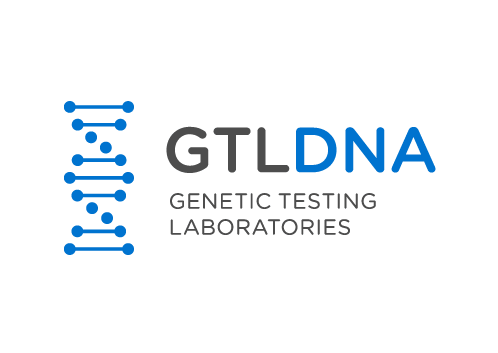Ancestry Tests: Understanding How they Work?
Ancestry tests are DNA based tests that look at specific regions or areas of your DNA to derive information about your ancestors. Stopping here with our explanation however would be skimming the surface and given the complexity of tracing ancestry by looking at our DNA, we should take a deeper look.
We might begin by saying that not all ancestry tests are the same; different ancestry tests have different goals and set out to trace a different part of an individual’s ancestry. The question that naturally follows is: What part of our genetic makeup must be analyzed in order to trace a specific part of your ancestry?
On the most basic level we need to look at chromosomes because not all chromosomes are the same and the information encoded in each of our 46 chromosomes is very different. Our 46 chromosomes are paired up to form 23 pairs. There are 22 pairs of chromosomes which are called autosomes. Autosomes are chromosomes numbered 1-22, thus humans have 44 of these autosomal chromosomes and 2 remaining pairs which are the sex chromosome pair. The 23rd chromosome pair is the sex chromosomes (XX in females and XY in males). Sex chromosomes will carry all the genes required to encode everything that makes us male or female. The 22 autosomal chromosome pairs are not in any way involved in sex determination but carry many genes encoding for other important roles and functions.
Ancestry tests using autosomes
Ancestry tests are based on either the analysis of autosomal chromosomes or of sex-specific XX or XY chromosomes. Tests that are based on autosomal analysis will look at a mix of genetic information that is recombined from both our biological parents and thus, from all one’s ancestors from both the paternal and maternal side of the family. The test works by looking at specific DNA sequences which are associated with people or populations in a given part of the world – hence, the term “geogenetic” which is often associated with this type of test because it links ones genes to certain geographical regions. Due to the fact that these tests look at DNA from both sides of the family, they will not give clear results because they trace such varied ancestry. More importantly, the geogenetic information as well as the geographical regions and populations associated with certain genetic markers are not clear-cut or well defined and can only establish your links to major populations such as sub-Saharan African, European, East Asian, or Native American.
Ancestry tests using sex-chromosomes
Ancestry tests that rely on the analysis of sex chromosomes just take one single sex chromosome for analysis (either the Y or the X chromosome) and derive information from that. These tests are often called lineage tests. Sex-chromosome ancestry tests are more accurate because they look at the genetic information from either your paternal side of the family or your maternal side of the family but not from both.
The Y chromosome, used to trace one’s paternal line, is passed down the male line, from father to son, generation after generation and thus allows scientists to trace a direct male lineage. The same applies to Mitochondrial DNA, a special type of DNA which is passed on from a mother to both her male and female children and which can be used to trance one’s maternal lineage. However, only females can pass this DNA onto their offspring. Sometimes very small changes take place on the Y chromosome or the MtDNA and these changes are passed down the line turning them into distinct markers of descent, distinguishing the lineages of different individuals or groups. Whilst lineage testing is insightful, it only accounts for a small portion of a person’s overall ancestry.
So what does the accuracy of my ancestry test depend on?
The accuracy of your ancestry test mostly depends on the database used by the laboratory and how comprehensive this database is. The results may also be viewed in conjunction with other family evidence – so if you discover a percentage of your ancestry is Asian, then you could actually look into your family and see whether you can find any Asian blood relatives from which you might have inherited those genes. Overall ancestry DNA tests can be a good tool to discover some interesting information about your roots but if you are keen on getting a bigger picture you may want to combine different tests and also look at your family tree, public registry or perhaps even seek the help of a genealogist.
Bibliography
Anwar, Y. (2007). 10.18.2007 – Researchers caution against genetic ancestry testing. [online] Available at: http://www.berkeley.edu/news/media/releases/2007/10/18_genetictesting.shtml [Accessed 25 Aug. 2016].
Rootsforreal.com. (2016). Roots for Real – Reviews for Roots for Real – DNA test choice – Advice. [online] Available at: http://rootsforreal.com/reviewadvice_en.php [Accessed 25 Aug. 2016].
O’Hanlon, L. (2016). Tracing Your Ancestry. [online] MIT Technology Review. Available at: https://www.technologyreview.com/s/405384/tracing-your-ancestry [Accessed 25 Aug. 2016].
Ucl.ac.uk. (2016). Understanding genetic ancestry testing. [online] Available at: https://www.ucl.ac.uk/mace-lab/debunking/understanding-testing [Accessed 25 Aug. 2016].
Reference, G. (2016). What is genetic ancestry testing?. [online] Genetics Home Reference. Available at: https://ghr.nlm.nih.gov/primer/testing/ancestrytesting [Accessed 25 Aug. 2016].
